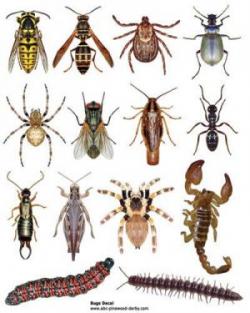Pest Management
Integrated Pest Management
School Integrated Pest Management (IPM) is the implementation by schools and daycare centers of a practice for reducing pests that de-emphasizes the use of pesticides as the principal control strategy. While pests are undesirable, they are only the indicators of a greater problem; IPM manages pests by focusing on these greater problems. Click on the Image for further information.
Chapter 85 of the Acts of 2000
An Act Protecting Children and Families From Harmful Pesticides
Below you can find our integrated pest management plans registered with the state for all schools. There is a link for the state site and a pdf link.
If you have any concerns or questions please contact us.
Resources: Northeastern IPM Center
Dennis-Yarmouth Integrated Pest Management
Updated October 2018
IPM Administration
IPM Dennis-Yarmouth Regional High School
IPM Station Avenue Elementary
IPM Mattacheese Middle School
Take Control of Your Classroom. Get the Bugs Out.
The most efficient and effective way to deal with pests is to prevent them in the first place. Teachers play a vital role in pest management in the classroom. They know their room better than anyone else; they see what comes in and say what goes. They make the rules. So why do they have pest critters? Because insects want the same thing you & I do:
- Food
- Water
- Shelter
…Eliminate these, and the incentive to come in goes away.
Food
Whether part of a program to provide breakfast & snacks, or a holiday party, food in the classroom is going to happen. It is the teacher’s job to manage it.
- Okay, that top drawer candy bar or opened bag of munch ‘ems are not being enjoyed by just you. Freezer zip-lock bags or plastic containers with lids are a must-use for this type of stuff.
- Designate an eating area for snacks & treats (preferably on tile).
- Choose foods that are easier to clean up (i.e. bagels instead of donuts or muffins).
- Get the kids to participate in post-snack clean up – tables, chairs and floors. (It’s never too early to teach them to clean!)
- Garbage and recycle bins should be emptied regularly and should never overflow; it may be necessary to empty them more often at this time of year.
- Make sure tile and carpeting gets cleaned regularly – check under furniture for food debris, especially those pieces on rollers.
Water
This includes ANY beverages, in ANY quantity.
- Leaky faucets & pipes are an oasis for night scavengers like crickets & roaches (common classroom pests). Make sure this maintenance issue gets reported.
- Sugary drinks have a way of getting spilled (try to avoid them in classrooms if you can). Spills should get wiped up immediately; efforts should be taken to get carpets as clean as possible.
Shelter
Not just the clutter bugs, but organized teachers unknowingly invite critters in by HOW they store their materials.
- Arts, crafts, miscellaneous supplies... Have you used it in the last year? Is there someone else who could use it more? Ask yourself this… often.
- German cockroaches love corrugated cardboard – they are easily transported into buildings this way. Crickets will munch on it. Mice build nests out of it. Any pest may use it as harborage. If you’re using cardboard for long term storage – DON’T. Move toward plastic bins or crates instead.
- Clutter is impossible to clean around – next to food, it’s what critters want the most. Stop and take a look around, weigh the benefits and costs of having.
*information from Janet A. Hurley, MPA, Extension Program specialist II-School IPM Texas A&M AgriLife Extension Service
